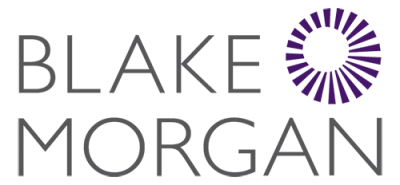Author: Katie James
The 2018 Autumn Budget introduced a multitude of changes in respect of HMRC, from amendments to the "personal company" tests for Entrepreneurs' Relief to the extension of Stamp Duty Land Tax first time buyer's relief. One change which seems to have flown largely under the radar is HMRC's move to place themselves as a preferential creditor in respect of taxes that are to be paid by a business's employees or customers but held on trust by the business when a business enters insolvency.
The Enterprise Act 2002 removed HMRC's preferential status and made HMRC a non-preferred creditor. HMRC therefore sat with the unsecured creditors in corporate insolvencies following the enactment of the Enterprise Act 2002. Previous to the Enterprise Act 2002, HMRC had been a preferential creditor in respect of all taxes, thereby having any tax due paid prior to any floating charges or unsecured creditors, termed the "Crown Preference". The changes introduced by the Enterprise Act 2002 and the removal of the "Crown Preference" was meant to encourage business rescue in insolvency proceedings, and create an environment in which lenders felt comfortable lending by way of floating charge and/or unsecured credit in order to aid a business in financial difficulty, whilst still maintaining a viable route for recovery.
From 6 April 2020, "when a business enters into insolvency, more of the taxes paid in good faith by its employees and customers, which are temporarily held on trust by the business, will go to fund public services, rather than being distributed to other creditors" (HM Treasury Budget October 2018). HMRC are effectively placing themselves as a preferential creditor again, rather than an unsecured creditor as they have been historically, which is likely to have a significant impact on not only the insolvent business but also on the creditors of the insolvent business.
It is important to note that this change will only apply to taxes which are collected and held by the business on behalf of other taxpayers. It will affect VAT, PAYE Income Tax, employee NICs and Construction Industry Scheme deductions. The treatment of taxes owed by the businesses themselves will remain unchanged, so for the purposes of Corporation Tax and employer NICs, HMRC will continue to have the status of an unsecured creditor in an insolvency situation.
Changing the status of HMRC in the priority of payments on insolvency is not without its issues, namely that by HMRC having a priority (being paid directly after secured creditors), there will be less money in the metaphorical "pot" for the floating charge holders and the unsecured creditors. This may in turn increase lending rates/ cost of borrowing, as lenders will seek to limit their risk exposure going forward. The Government have however denied that the proposed changes will have any material impact on the cost of borrowing. Lord Bates, when answering written parliamentary questions on the matter, stated that "the government does not expect this reform to significantly impact access to finance or the cost of borrowing". The Government's reassurances have however done little to quash the concerns of professional organisations.
The Treasury have advised that the rationale behind the change is that as things stand, when a business becomes insolvent, monies that are held in respect of individuals' taxes, and which should go towards public spending, actual end up paying towards the companies' debts. This move is anticipated to generate an additional £185 million in taxes per year which can go towards public spending according to the Government Budget briefing, albeit that the Government appear to have been particularly vague in how they have reached this estimate.
R3, the trade body for Insolvency Professionals, has raised concerns about HMRCs decision to negate on the provisions of the Enterprise Act 2002 by partially reinstating the "Crown Preference", and has said that "the move will have a significant impact on creditors and, by extension, business rescue and funding…. This squeeze on 'floating charge' lenders could have a big impact on business rescue and funding." The concern is that those lenders that secure the monies loaned by way of floating charge may be less likely to lend, especially where a company is already in financial difficulty, as they are less likely to recover the monies owed should the business enter an insolvency process. We may therefore see a decrease in this more flexible type of lending and a rise in lending secured by fixed charges. R3 has called for the Government to rethink its proposal on the basis that it is a step backwards and a move away from the encouraging steps taken to encourage business rescue since 2002.
It will be interesting to see how this progresses as we move towards April 2020 and whether the Government takes note of the concerns raised and enters into discussion regarding the proposal, with a view to amending the proposed changes due to come into force from 6 April 2020.









